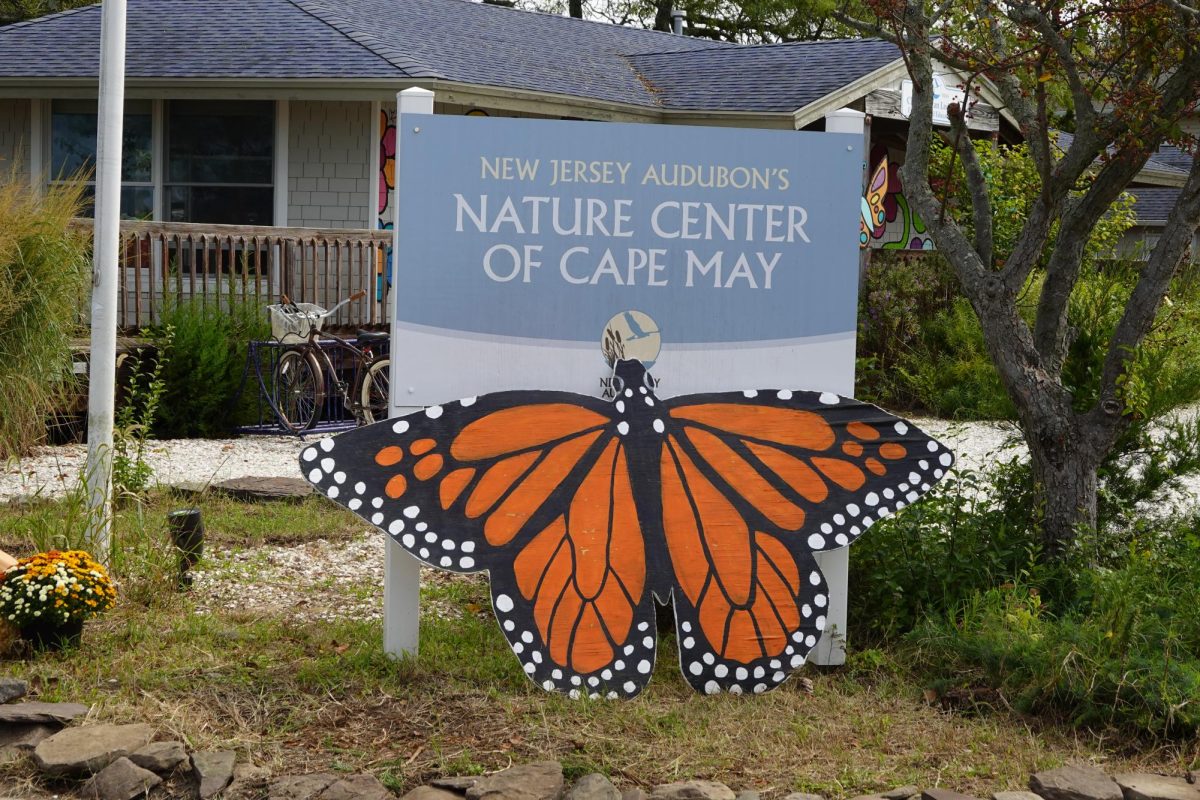
Michael Batutista
Each year, migrating monarch butterflies funnel down the Atlantic coast, carried by coastal winds and guided by the angle of the sun. In early October, they drift through Cape May’s meadows and dunes, pausing to feed on goldenrod and seaside asters before continuing their journey south. Their destination is 3,000 miles away in the high-elevation forests of central Mexico.
That forest is home to Estela Romero, a local educator from the town of Angangueo, Michoacán, in Mexico, who has spent years helping visitors, researchers, and students understand the connection between her community and the migration that stretches across the continent.
“I live where the butterflies rest,” said Romero. “Since ancestral times, our foreparents saw monarchs as the daughters of the sun. Their arrival in the fall was a sign of the harvest, and their departure meant it was time to plant again.”
This year marked the first time Romero visited Cape May for their annual Monarch Festival. She spoke at the Cape May Bird Observatory about how the insects depend on habitats throughout their route. The eastern monarch population has declined dramatically over the last few decades.
“We’ve seen fewer monarchs arrive, some years,” said Romero. “But they teach us resilience. They never give up. Neither should we.”
At the Cape May festival, visitors learned how small actions can support the species, such as planting milkweed, reducing pesticide use, and preserving open spaces where monarchs can feed and reproduce.
Local groups, including the Monarch Monitoring Project, track the butterflies’ passage through Cape May each fall to better understand the population trends.
Emily Reed, director of the Nature Center of Cape May, and Kristal Stoller, the center’s program director, emphasized that the festival is a team effort. Volunteers, local partners, and nonprofit organizations work together to run the event, which attracts more than 1,200 visitors annually.
“Our goal is to educate people about monarchs, help them connect to these insects and inspire them to help protect them,” said Reed.
Volunteers also aid in selling merchandise, emptying the trash cans, cleaning the bathroom, and checking visitors in.
“We want visitors to leave knowing that they can make an impact, and when we all come together, we make a larger difference,” said Stoller.
Jack McDonough, a field coordinator with the Monarch Monitoring Project, explained why Cape May is a critical stop along the migration.
“Cape May County is a south-facing peninsula,” said McDonough. “Monarchs don’t like to fly over water. When they reach a point, they are surrounded on three sides by the Delaware Bay, so they pause to feed and rest before continuing south.”
The monitoring project, which began in 1990 under Dick Walton and Dr. Lincoln Brower, utilizes tagging and observation to track migration timing and population trends.
For festival goers, one of the highlights is the live monarch tagging demonstration. Visitors are able to see the butterflies up close before they continue their travel. Through the tagging, scientists are also able to record data about each butterfly, including size, sex, and fat content, which provides insight into their health and the quality of habitat they passed through.
“First, we gently catch the butterflies using handheld nets,” said McDonough. “Then we attach a tiny sticker, called a Monarch Watch tag, to the underside of the hindwing. It’s very light, only a few milligrams, so it doesn’t affect their flight. To make the tag stick, we remove a small patch of scales on the wing, placing the tag on the membrane beneath. This way it stays on for the remainder of the journey without harming them.”